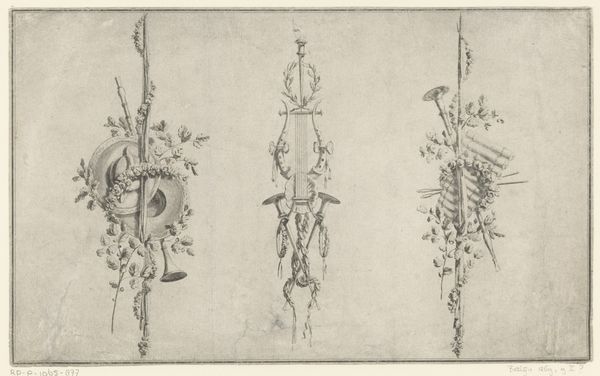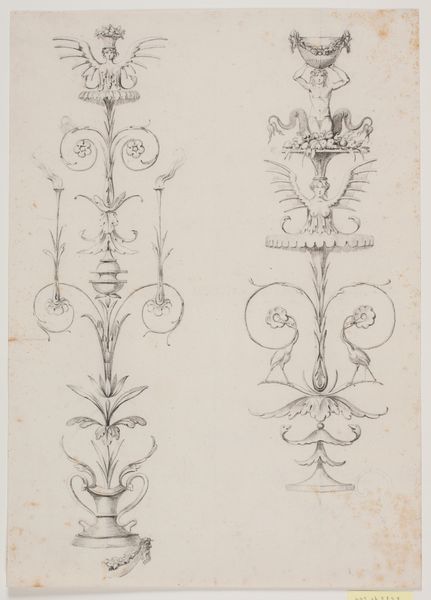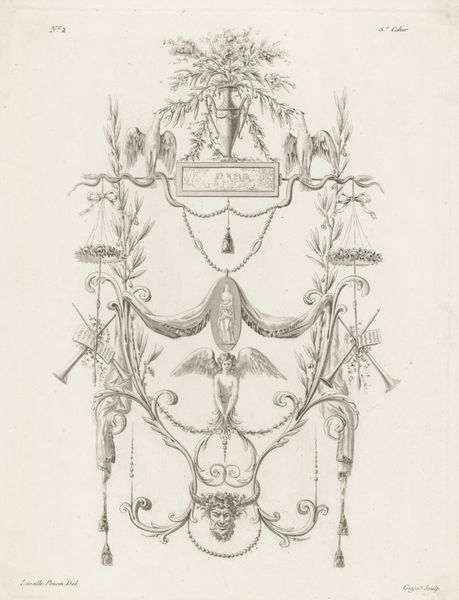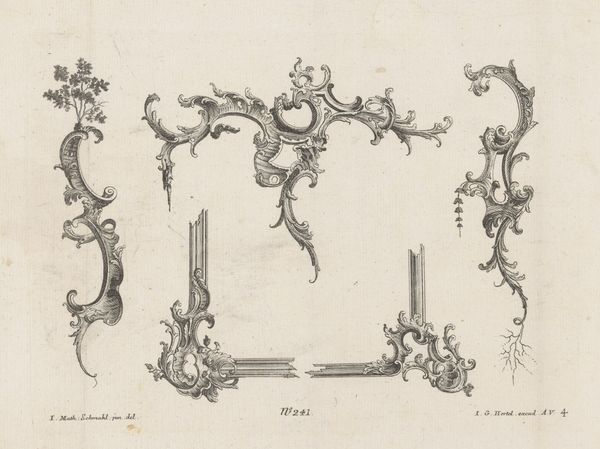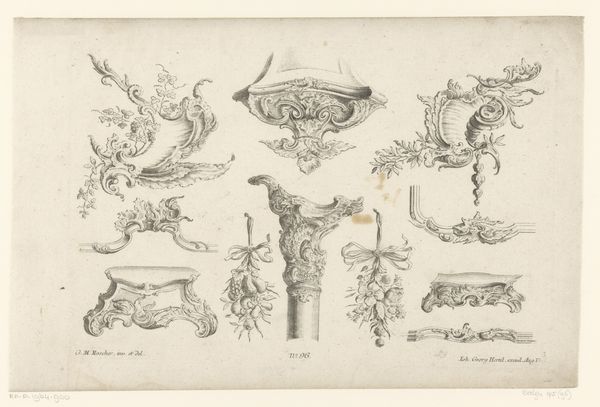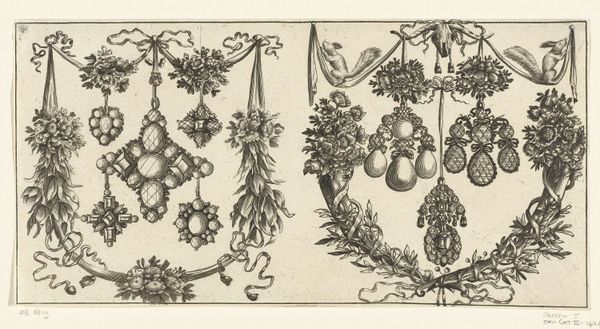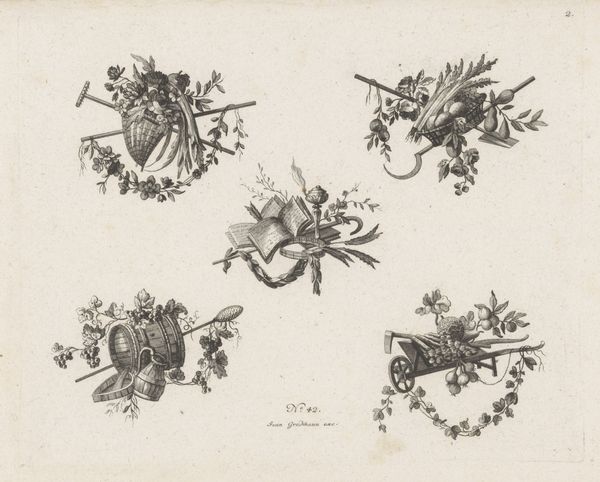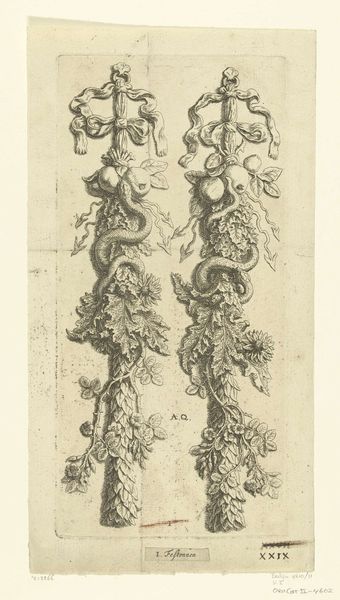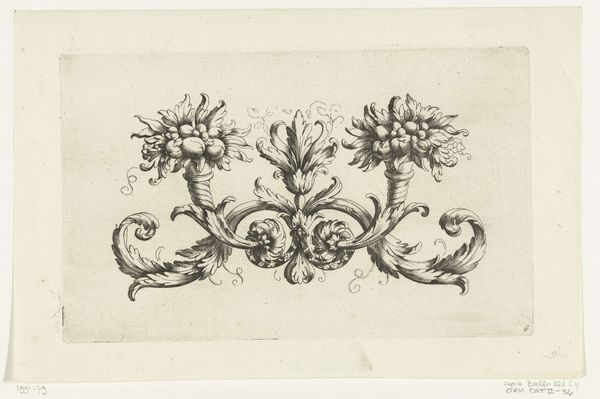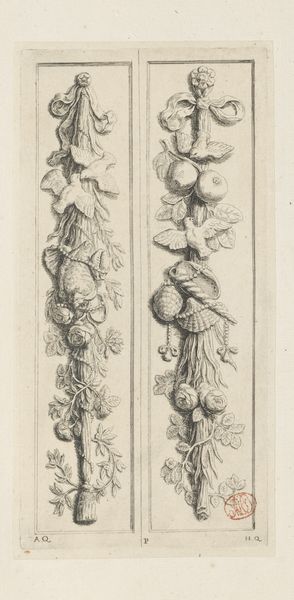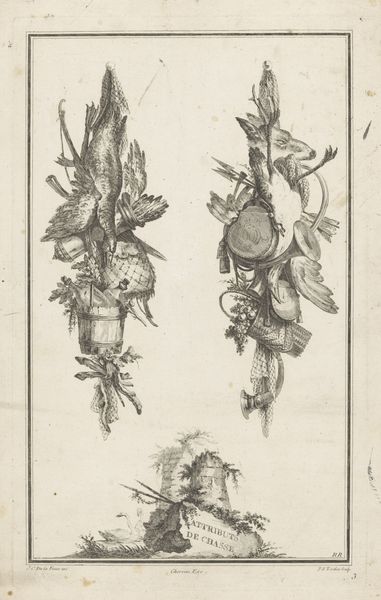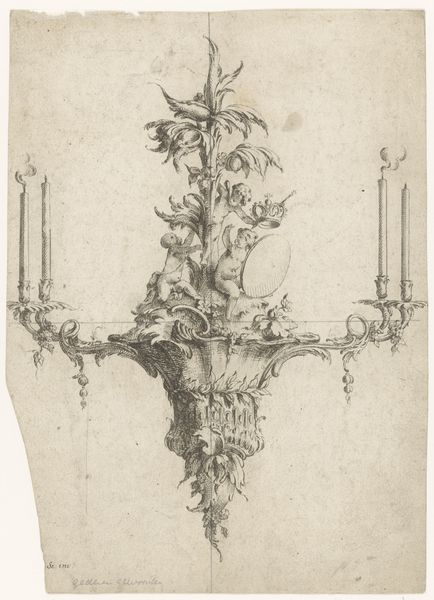
Dimensions: height 208 mm, width 320 mm
Copyright: Rijks Museum: Open Domain
Curator: Immediately striking, isn't it? The arrangement feels so considered. Editor: Almost suffocatingly so. All that painstaking engraving just for a fleeting decorative object. Curator: We're looking at "Trophies with jug and vase" by C. Le Meunnié, created around 1784-1785. It’s a pen drawing, later reproduced as an engraving. Note the delicate linework—a hallmark of the Rococo style. The symmetry! It's nearly perfect, if not subtly disrupted to lend dynamism. Editor: Indeed. What interests me is the sheer labor invested. Someone meticulously etched these incredibly detailed images into a metal plate, likely copper, using a variety of burins. Think about the craftsman’s time, the apprenticeship required, the workshops bustling with activity just to produce a relatively minor decorative print. And what about the paper it’s printed on, its linen content and watermarks, signaling its origin and trade networks. Curator: The composition itself is highly formalized. We see recurring motifs – vases, vegetation, playful objects hinting at classical references. These arrangements operate on multiple symbolic registers – celebrating art, nature, perhaps even the status of the owner? The visual language is rich with allegorical intent. Note how the artist carefully varies line weight and hatching to build form and to define texture, enhancing its visual interest and structural integrity. Editor: Right, and while we're examining its structural components, let’s remember where prints like this ended up: adorning walls, incorporated into books, disseminating idealized notions of beauty and status to an expanding consumer market. This isn't just art for art's sake, but rather part of the machinery of aspirational culture. One also thinks about how these were traded across countries, the distribution of images informing aesthetic preferences in regions afar. Curator: It's certainly a testament to a specific era's pursuit of harmony, balance, and elegant design. The drawing stands as a visual embodiment of Rococo principles. Editor: Precisely, and understanding those material conditions deepens our understanding of what it meant to create and consume beauty during that period. It allows one to speculate how art's meaning becomes linked with its economy, circulation, and purpose in the domestic, and increasingly public sphere. Curator: Indeed, both the conceptual elegance and material grounding together contribute to our appreciation. Editor: A fine intersection where art history comes alive.
Comments
No comments
Be the first to comment and join the conversation on the ultimate creative platform.
